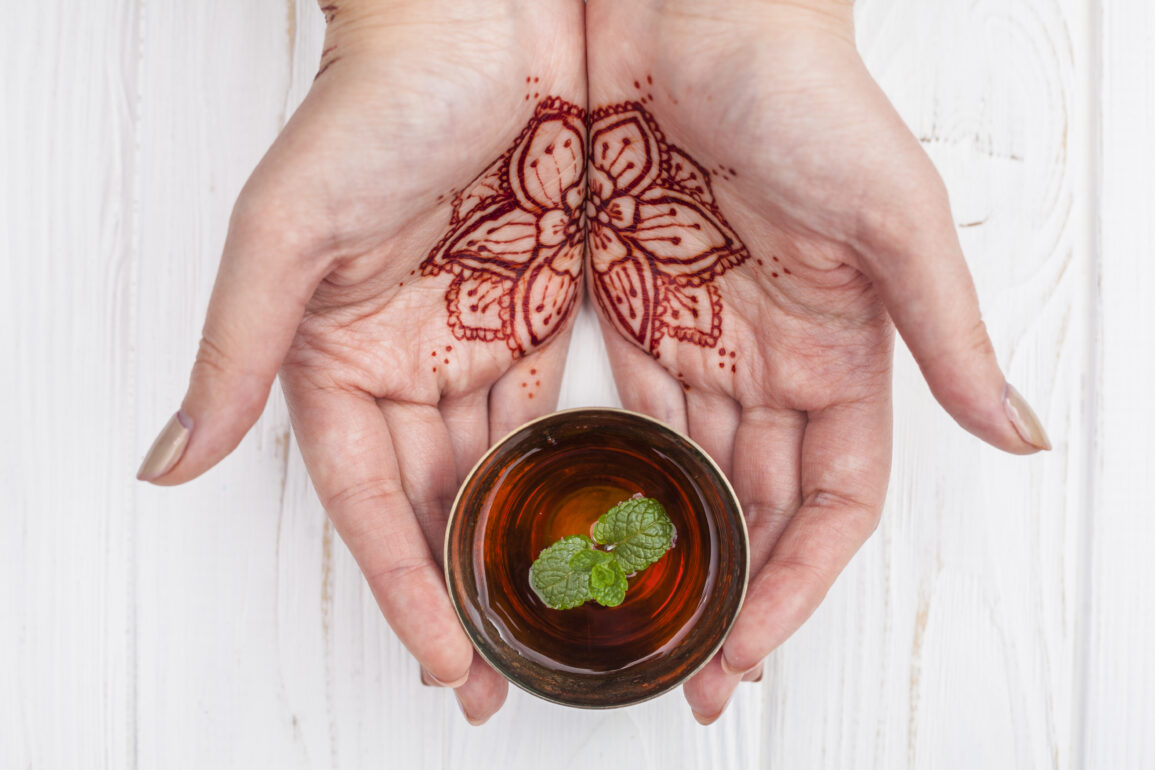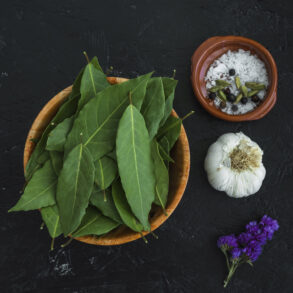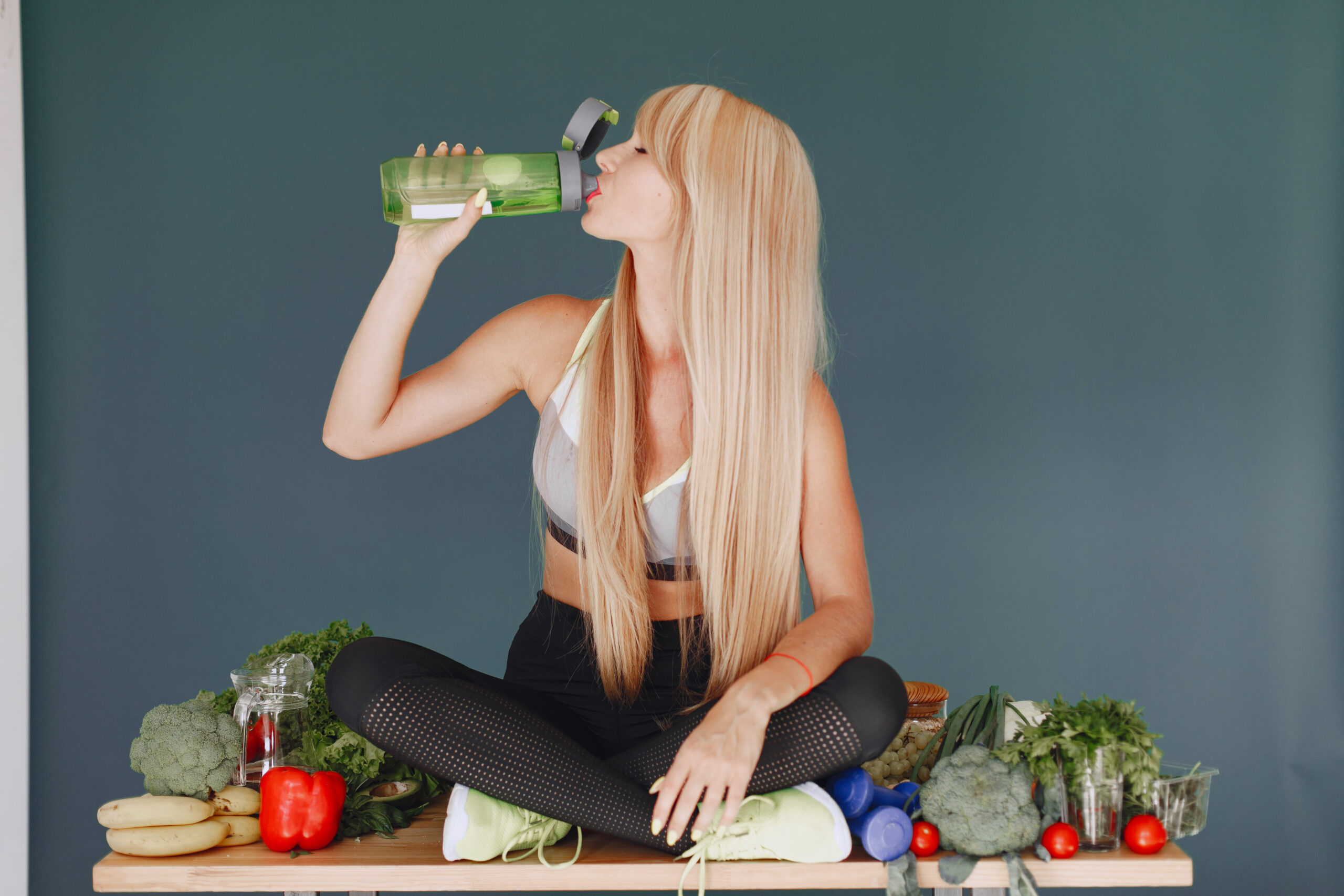For thousands of years Ayurveda has taught that beauty truly begins in the belly. The quality of digestion, absorption, and elimination determines the clarity of the mind, the vitality of the body, and the luminosity of the skin. Modern research on the gut-skin axis now echoes this ancient idea: when the digestive system functions harmoniously, inflammation subsides and the skin glows with health.
This article explores the Gut-Skin Connection Ayurveda explains how doshas, agni (digestive fire), diet, herbs, and lifestyle interact to maintain both internal balance and outer radiance.
1. The Ayurvedic View on the Gut-Skin Connection
In Ayurveda the body is seen as a network of channels (srotas) through which nutrients, energy, and waste flow. The digestive system annavaha srotas is considered the root of all nourishment. When digestion is strong, tissues (dhatus) receive proper sustenance; when it is weak, toxins (ama) accumulate and travel through these channels, often surfacing as skin issues.
The Gut-Skin Connection Ayurveda perspective therefore begins with Agni, the metabolic fire responsible for transforming food into usable energy. Balanced Agni creates lightness, clear thinking, and a glowing complexion. Disturbed Agni leads to sluggishness, bloating, and dull or inflamed skin.
2. Doshas and Their Influence on Skin Through Digestion
Ayurveda classifies individual constitutions into three doshas—Vata, Pitta, and Kapha—each influencing digestion and skin differently. Understanding these helps personalize care within the Gut-Skin Connection Ayurveda approach.
Vata: Dryness and Irregularity
When Vata dominates, digestion becomes erratic—sometimes strong, sometimes weak. Irregular Agni creates dryness in both gut and skin. Typical signs include constipation, rough texture, flakiness, and premature wrinkles. Balancing Vata involves warm, moist foods, steady routines, and grounding herbs like ashwagandha and licorice.
Pitta: Heat and Inflammation
Excess Pitta overheats the digestive tract, leading to acid reflux or loose stools. The same fiery imbalance manifests externally as redness, acne, or sensitivity.
To calm Pitta in the Gut-Skin Connection Ayurveda system, cooling foods such as cucumber, cilantro, and coconut are emphasized, along with bitter herbs like neem and manjistha.
Kapha: Congestion and Oiliness
Kapha’s slow, heavy nature can dull digestion, causing mucus accumulation and sluggish metabolism. On the skin this appears as oiliness, enlarged pores, or cystic eruptions. Light, spicy meals, exercise, and detoxifying herbs such as trikatu (ginger-black pepper-long pepper) help revive balance.
By harmonizing doshas through diet and routine, Ayurveda addresses the root causes that connect gut disorders and skin disturbances.
3. Agni: The Digestive Fire That Fuels Skin Health
Every Ayurvedic text describes Agni as central to well-being. There are 13 types of Agni, but Jatharagni—the main digestive fire in the stomach and small intestine—is most critical for the Gut-Skin Connection Ayurveda.
- Balanced Agni (Sama Agni): food digests efficiently; nutrients nourish tissues; complexion stays clear.
- Low Agni (Manda Agni): sluggish digestion produces ama; skin looks pale and lifeless.
- High Agni (Tikshna Agni): overly strong fire burns nutrients; skin becomes inflamed or acne-prone.
- Irregular Agni (Vishama Agni): alternating hunger and loss of appetite mirror alternating dryness and oiliness on the skin.
To maintain Sama Agni, Ayurveda prescribes mindful eating—warm meals, proper spices, and emotional calm. Balanced Agni ensures that everything downstream in the Gut-Skin Connection Ayurveda chain works optimally.
4. Ama: The Hidden Toxin Linking Gut Disorders to Skin Problems
A ma refers to undigested or improperly metabolized matter that clogs channels and breeds disease. When Ama circulates in the blood (rasa dhatu), it irritates tissues and finds weak spots to settle—often the skin.
From the Ayurvedic view, conditions like acne, eczema, psoriasis, or dull complexion reflect internal Ama overload.
Signs of Ama in the Gut-Skin Connection Ayurveda context
- Coated tongue
- Bloating and heaviness after meals
- Foul breath or body odor
- Itchy, congested, or inflamed skin
- Fatigue and sluggish elimination
The first step in any Ayurvedic skin program is therefore Ama Pachana—digesting and eliminating toxins through light fasting, herbal teas, and cleansing therapies.
5. The Six Tastes and Their Effect on Gut-Skin Balance
Ayurveda classifies food into six tastes (shad rasa): sweet, sour, salty, pungent, bitter, and astringent. Each influences the doshas and thereby the complexion.
| Taste | Action on Doshas | Impact on Gut-Skin Connection Ayurveda |
|---|---|---|
| Sweet | Calms Vata & Pitta | Moisturizes dry skin but may congest if overused |
| Sour | Increases Pitta & Kapha | Excess can cause rashes or breakouts |
| Salty | Increases Pitta & Kapha | Too much leads to puffiness |
| Pungent | Reduces Kapha | Clears toxins; adds glow when used moderately |
| Bitter | Reduces Pitta & Kapha | Purifies blood; key for acne and dullness |
| Astringent | Balances Pitta | Tightens tissues; tones skin |
A balanced plate including all six tastes keeps digestion efficient and prevents Ama buildup, the foundation of a healthy Gut-Skin Connection Ayurveda approach.
6. Gut Microbiome and Ayurveda: The Modern Reflection of Agni
Modern science calls it the microbiome; Ayurveda calls it Agni and Ojas. Both describe how a well-balanced gut ecosystem supports immunity and skin vitality.
Healthy gut bacteria ferment fibers into short-chain fatty acids that reduce inflammation—precisely what Ayurveda attributes to strong Agni and abundant Ojas (vital essence).
When antibiotics, processed foods, or stress disturb this inner ecosystem, the skin mirrors the imbalance through breakouts or dullness.
Thus, researchers exploring probiotics are essentially validating the Gut-Skin Connection Ayurveda has spoken of for millennia.
7. The Role of Ojas: Radiance Born from Perfect Digestion
In Ayurveda, Ojas is the subtle essence produced when all tissues are perfectly nourished. It provides immunity, mental clarity, and that unmistakable inner glow.
Weak digestion depletes Ojas; excessive toxins destroy it. When Ojas is abundant, the skin naturally shines—no cosmetics required.
Practices such as adequate sleep, positive emotions, gentle oil massage (abhyanga), and Ojas-building foods—milk, ghee, almonds, dates—are key pillars in sustaining the Gut-Skin Connection Ayurveda teaches.
8. Foods That Strengthen the Gut-Skin Connection
Ayurveda insists that “food is medicine.” Here are dietary guidelines to maintain luminous skin through digestive harmony.
1. Eat Fresh and Seasonal
Processed foods lack prana (life force) and burden Agni. Fresh vegetables, fruits, and whole grains are preferred in any Gut-Skin Connection Ayurveda diet.
2. Favor Warm, Cooked Meals
Cold or raw meals weaken digestive fire. Lightly cooked dishes with gentle spices aid assimilation and leave the skin with a soft and radiant feel.
3. Include Ghee and Healthy Fats
Small amounts of ghee lubricate internal tissues, preventing dryness both inside and on the skin’s surface.
4. Hydrate Wisely
Sip warm water or herbal infusions instead of icy drinks that dampen Agni.
5. Add Digestive Spices
Cumin, coriander, fennel, turmeric, and ginger kindle digestion and purify the blood—essential for the Gut-Skin Connection Ayurveda perspective.
6. Avoid Incompatible Food Combinations
Mixing milk with sour fruits or fish with dairy is discouraged; such combinations generate Ama that later appears as skin congestion.
9. Detoxification and Panchakarma for Skin Renewal
When diet alone cannot remove Ama, Ayurveda prescribes Panchakarma, a five-fold purification process. Under professional supervision, therapies such as Virechana (purgation), Vamana (emesis), and Basti (herbal enemas) reset digestion and restore skin clarity.
Even simple home cleanses—like a three-day kitchari fast with herbal teas—can rejuvenate the Gut-Skin Connection Ayurveda advocates.
After detox, herbs and foods work more effectively because the body’s channels are clear.
10. Herbal Allies for the Gut-Skin Connection Ayurveda
Ayurvedic pharmacology offers dozens of plants that harmonize digestion and enhance skin tone simultaneously.
| Herb | Primary Action | Role in Gut-Skin Connection Ayurveda |
|---|---|---|
| Triphala | Mild laxative, detoxifier | Clears Ama, improves absorption |
| Manjistha | Blood purifier | Reduces acne, pigmentation |
| Neem | Antimicrobial, cooling | Soothes inflamed skin, calms Pitta |
| Turmeric | Anti-inflammatory | Balances microbiota, adds glow |
| Aloe Vera | Cooling, hydrating | Heals gut lining and moisturizes skin |
| Guduchi (Giloy) | Immune-modulating | Builds Ojas and resilience |
Used internally or externally, these herbs illustrate how Gut-Skin Connection Ayurveda unites digestive health and beauty therapy.
11. Dinacharya: Daily Routines That Support the Gut-Skin Connection Ayurveda
Ayurveda emphasizes that radiant skin is not a single ritual but a rhythm of living in harmony with nature’s cycles. This daily discipline, known as Dinacharya, keeps digestion strong and the complexion luminous.
1. Early Rising and Hydration
Wake before sunrise, when Vata energy supports movement and cleansing. Drink a glass of warm water with lemon or a few drops of aloe juice. This gently stimulates Agni and flushes Ama — the first step in strengthening the Gut-Skin Connection Ayurveda values.
2. Tongue Scraping and Oil Pulling
A coated tongue reflects digestive toxins. Scraping removes these residues and reduces bacterial load. Follow with Gandusha or oil pulling (swishing sesame or coconut oil) to purify the mouth, which Ayurveda considers the start of digestion.
3. Abhyanga (Oil Massage)
Massaging the body with warm oil enhances circulation and calms the nervous system. It nourishes the skin externally while stimulating internal metabolism — a perfect example of how external care reinforces the Gut-Skin Connection Ayurveda describes.
4. Mindful Meals
Eat only when hungry, in a peaceful setting. Avoid multitasking, excessive talking, or screen time while eating. Chew thoroughly. Proper assimilation begins with mindfulness.
5. Rest and Sleep
Late nights weaken Agni. Deep, restful sleep allows tissue regeneration, balancing hormones that affect both digestion and the skin barrier.
Consistency in Dinacharya multiplies the results of herbs, oils, and diet, nurturing the digestive–dermal link from both ends.
12. Emotional Health: The Missing Link in the Gut-Skin Axis
Ayurveda treats mind and body as inseparable. Emotional turbulence can disturb digestion and thus the skin. Modern science now echoes this through the gut-brain-skin axis.
1. Stress and Digestion
When stress hormones like cortisol rise, blood is redirected away from the gut, weakening Agni and microbiome balance. This leads to inflammation, bloating, and flare-ups on the skin.
2. The Ayurvedic Approach
The Gut-Skin Connection Ayurveda philosophy includes mental digestion (manasika agni)—the ability to process emotions as easily as food. Unresolved anger aggravates Pitta, causing redness and rashes; worry heightens Vata, drying skin; lethargy feeds Kapha, leading to congestion.
3. Restoring Balance
- Practice pranayama (breath regulation) to calm nerves and improve oxygen flow.
- Include sattvic foods—fresh, light, and plant-based—to keep the mind clear.
- Engage in joyful activities, laughter, or nature walks to enhance Ojas.
A peaceful mind equals a peaceful gut—and radiant skin.
13. Yoga and Meditation for a Balanced Gut-Skin Axis
Yoga complements Ayurveda by regulating energy flow and detoxifying organs. Specific postures strengthen digestion while increasing skin oxygenation.
Key Asanas for Gut-Skin Connection Ayurveda
- Trikonasana (Triangle Pose): stimulates abdominal organs and improves circulation.
- Pavanamuktasana (Wind-Relieving Pose): relieves bloating and clears Ama.
- Bhujangasana (Cobra Pose): activates Agni and opens the chest for better oxygenation.
- Sarvangasana (Shoulder Stand): enhances blood flow to the face for a natural glow.
Meditation and Breathwork
Daily meditation reduces stress hormones and balances the autonomic nervous system. Practices such as Anulom Vilom (alternate nostril breathing) synchronize left and right brain hemispheres, aligning the entire Gut-Skin Connection Ayurveda mechanism through mind-body harmony.
14. Seasonal Adjustments (Ritucharya)
Each season affects digestion and skin differently. Ayurveda adapts diet and habits to maintain balance year-round.
| Season | Dominant Dosha | Impact on Skin | Ayurvedic Recommendations |
|---|---|---|---|
| Spring | Kapha | Congestion, oiliness | Light, spicy foods; herbal teas with ginger |
| Summer | Pitta | Redness, breakouts | Cooling foods like cucumber, coriander, aloe juice |
| Autumn | Vata | Dryness, roughness | Warm, oily meals; sesame oil massage |
| Winter | Kapha-Vata | Dullness, tightness | Rich soups, ghee, grounding herbs |
Following Ritucharya keeps both digestion and complexion resilient, embodying the cyclic intelligence central to Gut-Skin Connection Ayurveda.
15. The Role of Hydration and Herbal Infusions
Proper hydration is essential for both digestion and skin moisture. Ayurveda prefers warm, infused waters rather than cold drinks.
Recommended Infusions
- Cumin-Coriander-Fennel Tea: Enhances Agni without overheating Pitta.
- Lemon-Ginger Water: Detoxifies and awakens sluggish digestion.
- Tulsi-Hibiscus Infusion: Cools, cleanses, and adds a natural glow.
These gentle tonics flush toxins and support the microbiome, sustaining the Gut-Skin Connection Ayurveda recommends for clear, hydrated skin.
16. Modern Science Meets Ancient Ayurveda
In recent years, researchers have confirmed many Ayurvedic insights about digestion and skin.
1. Gut Microbiota and Inflammation
Studies reveal that imbalanced gut flora contributes to acne, eczema, and premature ageing. Restoring microbial diversity through fiber, fermented foods, and herbs mirrors Ayurvedic cleansing and rejuvenation principles.
2. Stress and the HPA Axis
The hypothalamic-pituitary-adrenal (HPA) axis connects emotional stress with digestive and skin inflammation. Ayurveda’s emphasis on meditation, proper rest, and sattvic diet directly calms this axis—modern validation of the Gut-Skin Connection Ayurveda emphasizes.
3. Nutrient Absorption and Barrier Function
Research shows poor digestion leads to micronutrient deficiencies (zinc, vitamin A, omega-3) that impair the skin barrier. Ayurveda addresses this through Agni-balancing spices and easily digestible meals.
Science and Ayurveda thus converge on a single truth: healthy skin begins in a balanced gut.
17. Practical One-Week Gut-Skin Cleanse
A simple home reset can revive digestion and brighten the skin. Here’s an Ayurvedic-inspired plan:
Day 1–3: Gentle Detox
- Eat kitchari (mung beans, rice, spices) for all meals.
- Drink warm cumin-coriander-fennel tea.
- Avoid sugar, caffeine, and processed food.
Day 4–5: Herbal Support
- Take Triphala at bedtime (if tolerated).
- Add aloe vera juice before breakfast.
- Apply a sandalwood or turmeric mask to draw out toxins through the skin.
Day 6–7: Rejuvenation
- Introduce fresh fruits, ghee, and almond milk.
- Meditate 20 minutes daily.
- Light oil massage to seal in Ojas.
This simple regimen demonstrates how the Gut-Skin Connection Ayurveda principle works practically: cleanse inside, glow outside.
18. Common Myths About the Gut-Skin Connection Ayurveda
Myth 1: Skin problems are only external.
Ayurveda views the skin as a mirror of internal health. Cleansers and creams help, but true radiance requires digestive harmony.
Myth 2: Fasting always improves skin.
Excessive fasting weakens Agni. Ayurveda prefers gentle cleansing and consistent nourishment.
Myth 3: All herbs are cooling and detoxifying.
Herbs act differently according to dosha. Knowing your constitution is crucial in the Gut-Skin Connection Ayurveda path.
Myth 4: Modern medicine and Ayurveda cannot coexist.
In truth, many dermatologists now explore probiotics and anti-inflammatory diets that reflect Ayurvedic reasoning.
Understanding these nuances ensures you apply Ayurvedic wisdom safely and effectively.
19. FAQs on Gut-Skin Connection Ayurveda
1. How long does it take to see results?
Most people notice improved digestion within two weeks and brighter skin within one month of consistent practice.
2. Can I follow Gut-Skin Connection Ayurveda alongside modern treatments?
Yes. Ayurvedic diet and lifestyle enhance any skin-care routine by reducing internal inflammation.
3. Is it suitable for all ages?
Absolutely. Adjust portions and spice intensity for children or the elderly.
4. What’s the best breakfast for skin health?
Warm oatmeal with ghee, cardamom, and soaked almonds—light yet nourishing for Agni and Ojas.
5. Are probiotics Ayurvedic?
While the term is modern, Ayurveda’s fermented foods like buttermilk (takra) and kanji embody the same principle—feeding beneficial microbes.
6. Can stress really cause acne?
Yes. Ayurveda linked emotional imbalance and skin centuries before stress hormones were identified. Calming practices restore both digestion and complexion.
20. The Spiritual Dimension: Beyond Physical Beauty
The Gut-Skin Connection Ayurveda extends to emotional and spiritual wellness. Clear skin symbolizes internal clarity and self-awareness. Practicing gratitude, compassion, and mindful eating turns each meal into meditation.
Ayurveda calls this Ahara Vidhi Vidhan—the sacred art of eating. When meals are prepared with love and eaten with focus, even simple food transforms into medicine, radiating through the skin as Tejas (inner glow).
21. Integrating Ayurveda into Modern Life
You don’t have to live in an ashram to practice Ayurvedic wisdom. Simple daily habits make the Gut-Skin Connection Ayurveda achievable for everyone:
- Drink warm water through the day.
- Favor whole, seasonal foods.
- Use spices like cumin and turmeric regularly.
- Maintain regular sleep cycles.
- Take brief pauses for deep breathing before meals.
Small shifts compound into visible results—clear digestion, calm emotions, and radiant skin.
22. Key Takeaways
- The skin is a reflection of digestive health.
- Agni (digestive fire) determines both nutrient absorption and complexion.
- Ama (toxins) are the root cause of dull or problematic skin.
- Balancing doshas through diet, herbs, and lifestyle restores harmony.
- Emotional and spiritual balance complete the cycle of wellness.
The Gut-Skin Connection Ayurveda offers a holistic framework that unites body, mind, and environment—addressing the cause, not just the symptoms.
23. Conclusion: Beauty That Begins Within
True beauty in Ayurveda is Swasthya—complete harmony of body, senses, mind, and soul. When digestion flows smoothly, nutrients reach every tissue, Ama dissolves, and Ojas illuminates the body from within. The glow that emerges is effortless, authentic, and lasting.
In an age obsessed with surface treatments, the Gut-Skin Connection Ayurveda reminds us that glowing skin starts with mindful eating, balanced living, and gratitude. The gut and skin are not separate organs—they’re partners in the dance of vitality.
Feed your fire wisely, and your skin will mirror the light of balanced Agni.










